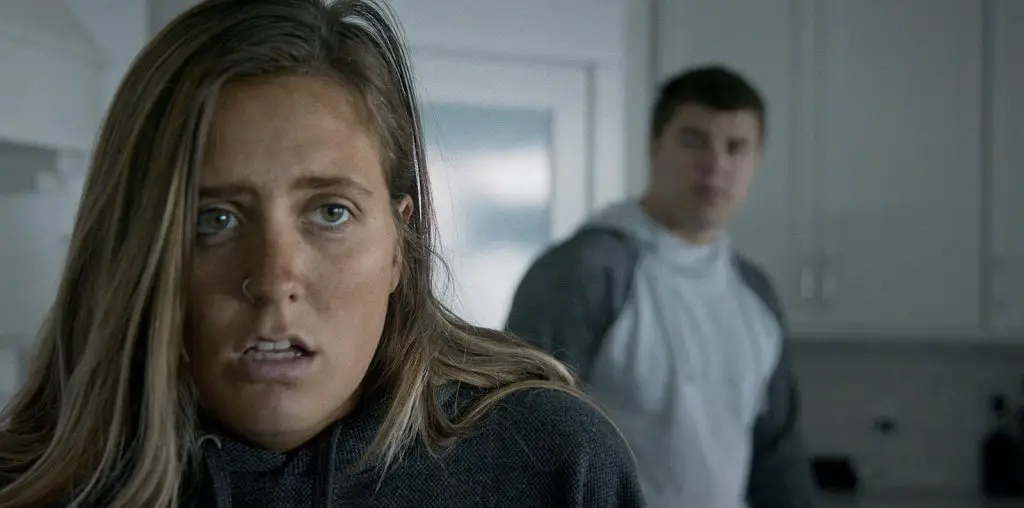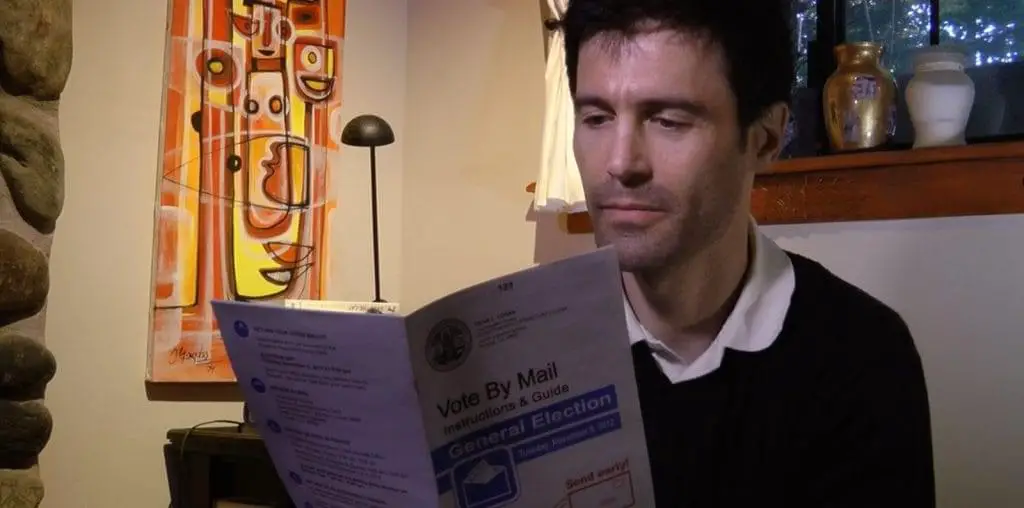
The Korean animated production “My Beautiful Girl, Mari” is one of the most bizarre features currently in release. The film is rich with museum-worthy art which keeps the audience in constant awe of director’s Lee Sung-gang’s visual imagination, yet the screenplay is so opaque that it ultimately vitiates the total effect. What results is a film that is truly lovely to look at but hopelessly muddled to follow.
The opening credits set the extraordinary visual mood for the film: a seagull flies alone through the skyscraper canyons of Seoul on a snowy evening sky. The sequence, brilliant mixing 2D and 3D animation, is soaring in so many ways that the anticipation of a new masterpiece begins to build. However, the film quickly gets locked into a soggy plot with two childhood friends, Namoo and Junho, meeting briefly as adults after a long separation. Junho gives Namoo a gift from their past: a shiny marble which seems to have a female figurine floating within its smooth glass. The film then shifts back their boyhood in a Korean fishing village during a most unusual summertime.
In flashback, neither Namoo nor Junho are particularly happy boys. Namoo lives with his mother and grandmother, who ran a small diner; his father is nowhere to be seen and his fate is not clear, though one could assume he is dead. A virile fisherman tries to ingratiate himself into this family, with Namoo’s mother enjoying the attention while the boy shows indifference and impatience to the stranger. Namoo’s only friends are his mischievous kitten Yo and his pal Junho, a chubby lad who gets into endless problems with his love-hate relationship with the tough girl Soog-y (he sort of loves her and she definitely hates him).
Although the story up to this point is somewhat downbeat, “My Beautiful Girl, Mari” is blessed with glorious animation that turns this unlikely location into a work of visual splendor. Swept with soothing pastel hues, the film has a surplus of memorable imagery from the boys’ pretending to pilot the underwater wreck of a pleasure boat to the flash of light across the surface of a box of marbles (resulting in a startling color dance on the circular surfaces) to the stunning dream sequence where Namoo’s is suddenly underwater, complete with air bubbles floating up from the wooden floorboards and toy planes bobbing off their desktop launchpad as they rise up through the water.
If the film focused on the summer of the boys, the film would have found its footing. Unfortunately, “My Beautiful Girl, Mari” veers into a strange direction when Namoo’s romping through an abandoned lighthouse takes him into an alternate universe of billowy clouds, Rousseau-worthy vegetation, a white furry dog the size of a Stegosaurus and a silent white-haired girl who floats through the air. Namoo refers to her as Mari, although it is never explained where the name came from. Junho, upon hearing this tale, dismisses it as a bad dream…until one afternoon he joins Namoo in the lighthouse and they both fall into the land of Mari. While the Mari sequences are remarkable in terms of surreal animation, they are ultimately pointless as absolutely nothing transpires when the boys and Mari are together. She floats around with a vacant look while they try to run across the clouds in pursuit of her…and that’s it. Basic questions of who, what, where, when, why and how are never considered and leave the audience completely lost.
“My Beautiful Girl, Mari” continues in this lopsided manner into the climax where a brutal storm threatens the fishing fleet of the village. The depiction of the tempest-tossed boats on the merciless waves, with their ice-white lights flashing through the grey-black rainy night, is one of the most memorable animated accomplishments of recent years. Yet the fate of the fleet is inexplicably given over to the boys and the aforementioned marble with the figurine inside, which somehow is the key to Mari’s world. The boys race to the abandoned lighthouse and use the marble to conjure up Mari (or someone with access to lightning bolts) to awaken the facility’s dead beacon and shine a much-needed glow across the waters. After a few crashes of thunder and one well-placed lightning shot, this is achieved and the storm suddenly disappears. This entire plot twist makes a near-mockery of the artistic drama of the imperiled fishermen. Filmmaker Lee could have just as easily spliced in dance sequences from “Striporama” and achieved the same effect…albeit to greater satisfaction for the more jaded mature men in the audience.
So whatever happened to Mari or the rescued fishermen or the fella trying to woo Namoo’s mother or the Tom-and-Jerry relation between Junho and Soog-y? No one knows, since the film ends rather abruptly…as if Lee ran out of film before tying up his odd story ends. This leaves “My Beautiful Girl, Mari” with the strange distinction of being one of the most beautiful but baffling animated films ever made.

